Thermal Stability of Self-Assembled 3-Aminopropyltrimethoxysilane Diffusion Barrier Terminated by Carboxyl Groups
Abstract
1. Introduction
2. Experimental
2.1. Samples Preparation
2.2. Analytical Methods
3. Results and Discussion
3.1. Characterization of COOH-APTMS SAM
3.2. Combination of Copper Film and COOH-APTMS SAM
3.3. Thermal Stability of COOH-APTMS SAM
4. Conclusions
Author Contributions
Funding
Institutional Review Board Statement
Informed Consent Statement
Data Availability Statement
Conflicts of Interest
References
- Cheng, Y.L.; Huang, H.C.; Lee, C.Y.; Chen, G.S.; Fang, J.S. Comparison of Cu and Co Integration with Porous Low-k SiOCH Dielectrics. Thin Solid Films 2020, 704, 138010. [Google Scholar] [CrossRef]
- Oliveira, B.M.C.; Santos, R.F.; Piedade, A.P.; Ferreira, P.J.; Vieira, M.F. Co-W Barrier Layers for Metallization of Copper Interconnects: Thermal Performance Analysis. Nanomaterials 2022, 12, 1752. [Google Scholar] [CrossRef] [PubMed]
- Li, X.N.; Wang, M.; Zhao, L.R.; Bao, C.M.; Chu, J.P.; Dong, C. Thermal stability of barrierless Cu-Ni-Sn films. Appl. Surf. Sci. 2014, 297, 89–94. [Google Scholar] [CrossRef]
- Hu, Z.Y.; Ren, L.; Zhao, K.N.; Wei, G.Y.; Zhang, Z.Q.; Han, T.; Zhong, F.P.; Yuan, M. A novel diffusion barrier of electrodeposited CoWP layer between copper and silicon: Preparation and performance. Surf. Interfaces 2022, 30, 101925. [Google Scholar] [CrossRef]
- Chen, Y.L.; Yeh, K.H.; Ou, T.Y.; Chang, L.C. Diffusion Barrier Characteristics of WSiN Films. Coatings 2022, 12, 811. [Google Scholar] [CrossRef]
- Ahmed, M.; Li, Y.; Chen, W.; Li, E.P. Diffusion Barrier Prediction of Graphene and Boron Nitride for Copper Interconnects by Deep Learning. IEEE Access 2020, 8, 210542–210549. [Google Scholar] [CrossRef]
- Youn, H.; Kim, S.; Kim, S.H. Diffusion-controlled growth of Cu thin films electrodeposited directly on atomic-layer-deposited WC diffusion barrier for Cu interconnect. Microelectron. Eng. 2021, 248, 111613. [Google Scholar] [CrossRef]
- Chen, S.H.; Tan, L.Y.; Yang, C.L.; Chen, P.X.; Hu, A.M.; Ling, H.Q.; Li, M.; Huang, T. Effects of amorphous Co-W and Ni-W barrier layers on the evolution of Sn/Cu interface. Mater. Charact. 2021, 181, 111448. [Google Scholar] [CrossRef]
- Gao, Z.Q.; Wang, C.; Gao, N.; Chen, Y.B.; Chai, Z.B.; Wang, Y.P.; Ma, H.T. Electrodeposited Ni-W coatings as the effective reaction barrier at Ga-21.5In-10Sn/Cu interfaces. Surf. Interfaces 2022, 30, 101838. [Google Scholar] [CrossRef]
- Hu, K.; Hu, Q.; Xu, X.; Chen, S.; Ma, J.; Dong, W. Excellent diffusion barrier property of amorphous NbMoTaW medium entropy alloy thin films used in Cu/Si Connect System. Vacuum 2022, 202, 111195. [Google Scholar] [CrossRef]
- Im, B.; Kim, S. Influence of additives on Cu thin films electrodeposited directly on Ti diffusion barrier in Cl-free electrolytes for Cu interconnect. Microelectron. Eng. 2017, 172, 8–12. [Google Scholar] [CrossRef]
- Traving, M.; Zienert, I.; Zschech, E.; Schindler, G.; Steinhogl, W.; Engelhardt, A. Phase analysis of TaN/Ta barrier layers in sub-micrometer trench structures for Cu interconnects. Appl. Surf. Sci. 2005, 252, 11–17. [Google Scholar] [CrossRef]
- Kim, K.O.; Kim, S. Surface Morphology Control of Cu-Ag Alloy Thin Film on W Diffusion Barrier by Seedless Electrodeposition. J. Nanosci. Nanotechnol. 2016, 16, 11701–11706. [Google Scholar] [CrossRef]
- Wang, Y.; Cao, F.; Ding, M.; Shao, L. Evaluation of the barrier capability of Zr-Si films with different substrate temperature for Cu metallization. Appl. Surf. Sci. 2009, 255, 4738–4741. [Google Scholar] [CrossRef]
- Delacruz, S.; Wang, Z.; Cheng, P.; Carraro, C.; Maboudian, R. TiN diffusion barrier for stable W/SiC(0001) interfaces in inert ambient at high temperature. Thin Solid Films 2019, 670, 54–59. [Google Scholar] [CrossRef]
- Wang, C.W.; Yiu, P.; Chu, J.P.; Shek, C.H.; Hsueh, C.H. Zr-Ti-Ni thin film metallic glass as a diffusion barrier between copper and silicon. J. Mater. Sci. 2015, 50, 2085–2092. [Google Scholar] [CrossRef]
- Leu, L.C.; Norton, D.P.; Mcelwee, W.L.; Anderson, T.J. Properties of reactively sputtered W-B-N thin film as a diffusion barrier for Cu metallization on Si. Appl. Phys. A Mater. Sci. Process. 2009, 94, 691–695. [Google Scholar] [CrossRef]
- Ramanath, G.; Cui, G.; Ganesan, P.G.; Guo, X.; Ellis, A.V.; Stukowski, M.; Vijayamohanan, K.; Doppelt, P.; Lane, M. Self-assembled subnanolayers as interfacial adhesion enhancers and diffusion barriers for integrated circuits. Appl. Phys. Lett. 2003, 83, 383–385. [Google Scholar] [CrossRef]
- Inberg, A.; Glickman, E.; Asher, T.; Fishelson, N.; Shacham, D.Y. Electrical properties of sub-100 nm Cu films deposited by electroless plating on amino-terminated silicon oxide activated with Au nano-particles. Surf. Coat. Technol. 2009, 204, 520–524. [Google Scholar] [CrossRef]
- Rebiscoul, D.; Perrut, V.; Morel, T.; Jayet, C.; Cubitt, R.; Haumesser, P.H. Alkoxysilane layers compatible with Cu deposition: Towards new diffusion barriers? Microelectron. Eng. 2012, 92, 45–48. [Google Scholar] [CrossRef]
- Rahman, M.A.; Han, J.S.; Jeong, K.; Nam, H.S.; Lee, J. Effects of solvent on the formation of the MUA monolayer on Si and its diffusion barrier properties for Cu metallization. Electron. Mater. Lett. 2014, 10, 671–678. [Google Scholar] [CrossRef]
- Fang, J.S.; Lee, C.E.; Cheng, Y.L.; Chen, G.S. Strengthening the Electromigration Resistance of Nanoscaled Copper Lines by (3-aminopropyl)trimethoxysilane Self-Assembled Monolayer. ECS J. Solid State Sci. Technol. 2021, 10, 83007. [Google Scholar] [CrossRef]
- Liu, Z.Z.; Wang, Q.; Xin, L.; Bao, J.Q. Effects of amino-terminated self-assembled monolayers on nucleation and growth of chemical vapor-deposited copper films. Thin Solid Films 2008, 517, 635–640. [Google Scholar] [CrossRef]
- Cheng, Y.L.; Huang, C.W.; Lee, C.Y.; Chen, G.S.; Fang, J.S. Self-Assembled Monolayers on Highly Porous Low-k Dielectrics by 3-Aminopropyltrimethoxysilane Treatment. Coatings 2019, 9, 246. [Google Scholar] [CrossRef]
- Fang, J.S.; Yang, T.M.; Cheng, Y.L.; Chen, G.S. (3-Aminopropyl)trimethoxysilane Self-Assembled Monolayer as Barrier of Porous SiOCH for Electroless Cu Metallization: Optimizations of SiOCH Hydroxylation and Monolayer Functionalization. ECS J. Solid State Sci. Technol. 2021, 10, 023003. [Google Scholar] [CrossRef]
- Volders, H.; Carbonell, L.; Heylen, N.; Kellens, K.; Zhao, C.; Marrant, K.; Faelens, G.; Conard, T.; Parmentier, B.; Steenbergen, J.; et al. Barrier and seed repair performance of thin RuTa films for Cu interconnects. Microelectron. Eng. 2011, 88, 690–693. [Google Scholar] [CrossRef]
- Caro, A.M.; Maes, G.; Borghs, G.; Whelan, C.M. Screening self-assembled monolayers as Cu diffusion barriers. Microelectron. Eng. 2008, 85, 2047–2050. [Google Scholar] [CrossRef]
- Ganesan, P.G.; Singh, A.P.; Ramanath, G. Diffusion barrier properties of carboxyl- and amine-terminated molecular nanolayers. Appl. Phys. Lett. 2004, 85, 579–581. [Google Scholar] [CrossRef]
- Kern, W. Cleaning solutions based on hydrogen peroxide for use in silicon semiconductor technology. RCA Rev. 1970, 31, 51–69. [Google Scholar]
- Dauskardt, R.H.; Lane, M.; Ma, Q.; Krishna, N. Adhesion and debonding of multi-layer thin film structures. Eng. Fract. Mech. 1998, 61, 141–162. [Google Scholar] [CrossRef]
- Chung, Y.; Lee, S.; Mahata, C.; Seo, J.; Lim, S.M.; Jeong, M.S.; Jung, H.; Joo, Y.C.; Park, Y.B.; Kim, H.; et al. Coupled self-assembled monolayer for enhancement of Cu diffusion barrier and adhesion properties. RSC Adv. 2014, 4, 60123–60130. [Google Scholar] [CrossRef]
- Zhao, Z.K.; He, Y.Y.; Yang, H.F.; Qu, X.P.; Lu, X.C.; Luo, J.B. Aminosilanization nanoadhesive layer for nanoelectric circuits with porous ultralow dielectric film. ACS Appl. Mater. Interfaces 2013, 5, 6097–6107. [Google Scholar] [CrossRef] [PubMed]
- Ding, M.H.; Zheng, H.; Wang, L.; Zhang, H.S. A Study of Ta-Si-N/Ti Bilayer Diffusion Barrier for Copper/Silicon Contact Systems. Mater. Manuf. Process. 2016, 31, 1009–1013. [Google Scholar] [CrossRef]
- Zhang, F.; Srinivasan, M.P. Self-assembled molecular films of aminosilanes and their immobilization capacities. Langmuir 2004, 20, 2309–2314. [Google Scholar] [CrossRef] [PubMed]
- Chauhan, A.K.; Aswal, D.K.; Koiry, S.P.; Gupta, S.K.; Yakhmi, J.V.; Surgers, C.; Guerin, D.; Lenfant, S.; Vuillaume, D. Self-assembly of the 3-aminopropyltrimethoxysilane multilayers on Si and hysteretic current-voltage characteristics. Appl. Phys. A Mater. Sci. Process. 2008, 90, 581–589. [Google Scholar] [CrossRef]
- Jaksa, G.; Stefane, B.; Kovac, J. Influence of different solvents on the morphology of APTMS-modified silicon surfaces. Appl. Surf. Sci. 2014, 315, 516–522. [Google Scholar] [CrossRef]
- Kong, Z.; Wang, Q.; Liang, D. Self-assembling of cyano- and carboxyl-terminated monolayers using short-chain alkylsiloxane. Appl. Surf. Sci. 2009, 256, 1372–1376. [Google Scholar] [CrossRef]
- Kong, Z.; Wang, Q.; Ding, L.; Wu, T. Study on chemical vapor deposited copper films on cyano and carboxylic self-assembled monolayer diffusion barriers. Thin Solid Films 2010, 518, 4852–4859. [Google Scholar] [CrossRef]
- Garg, S.; Singh, B.; Liu, X.; Jain, A.; Ravishankar, N.; Interrante, L.; Ramanath, G. MetalDielectric Interface Toughening by Catalyzed Ring Opening in a Monolayer. J. Phys. Chem. Lett. 2010, 1, 336–340. [Google Scholar] [CrossRef]
- Abe, K.; Harada, Y.; Onoda, H. Study of crystal orientation in Cu film on TiN layered structures. J. Vac. Sci. Technol. B Microelectron. Nanometer. Struct. 1999, 17, 1464–1469. [Google Scholar] [CrossRef]
- Sun, H.L.; Huang, X.X.; Lian, X.X.; Wang, G.X. Adjustment Cu3Si growth in the interface of annealed Cu-Zr alloy films/Si substrate to form inverted pyramid structure. Mater. Lett. 2019, 255, 126536. [Google Scholar] [CrossRef]
- Sharma, S.; Kumar, M.; Rani, S.; Kumar, D. Deposition and characterization of 3-aminopr-opyltrime-thoxysilane monolayer diffusion barrier for copper metallization. Metall. Mater. Trans. B 2015, 46, 928–932. [Google Scholar] [CrossRef]
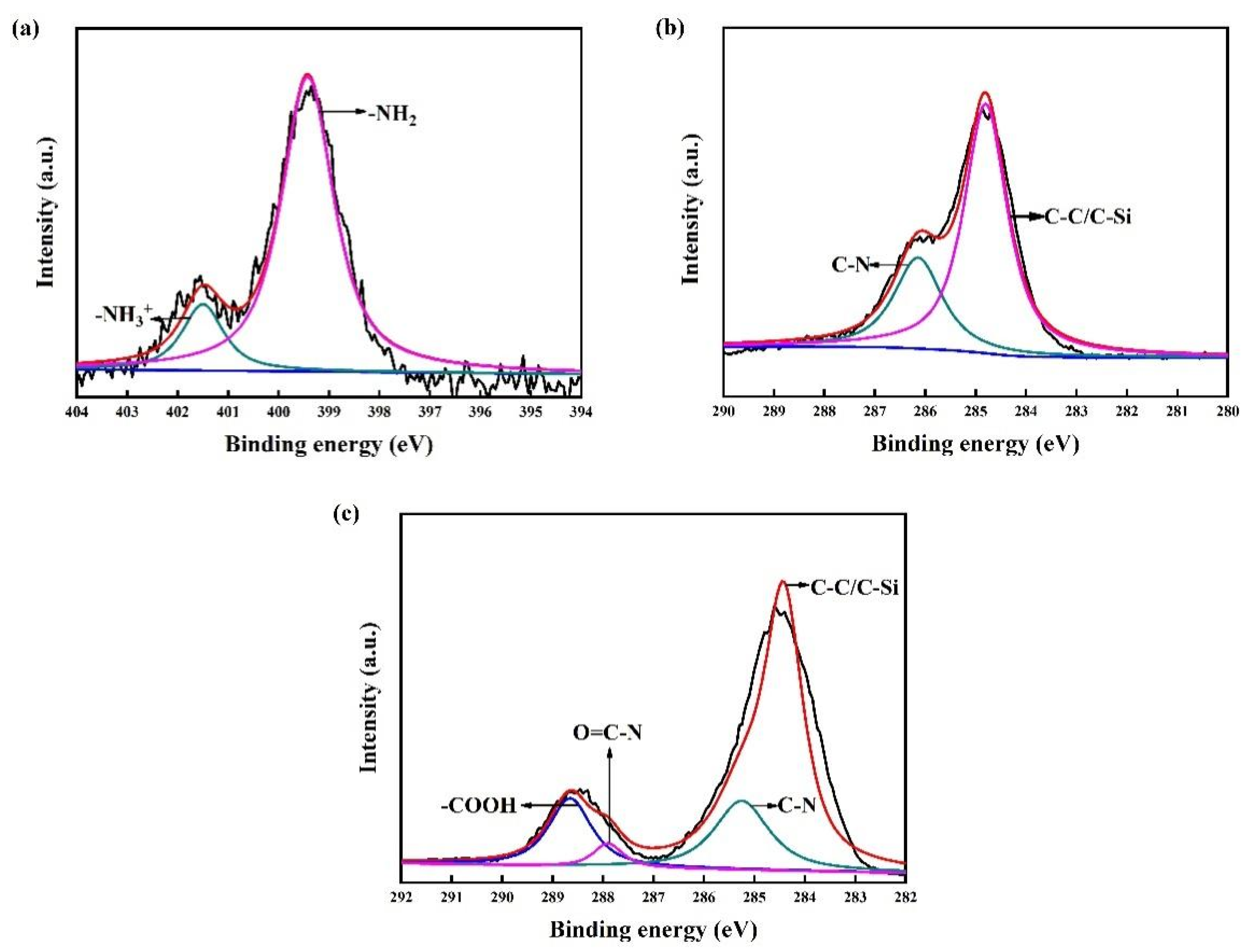

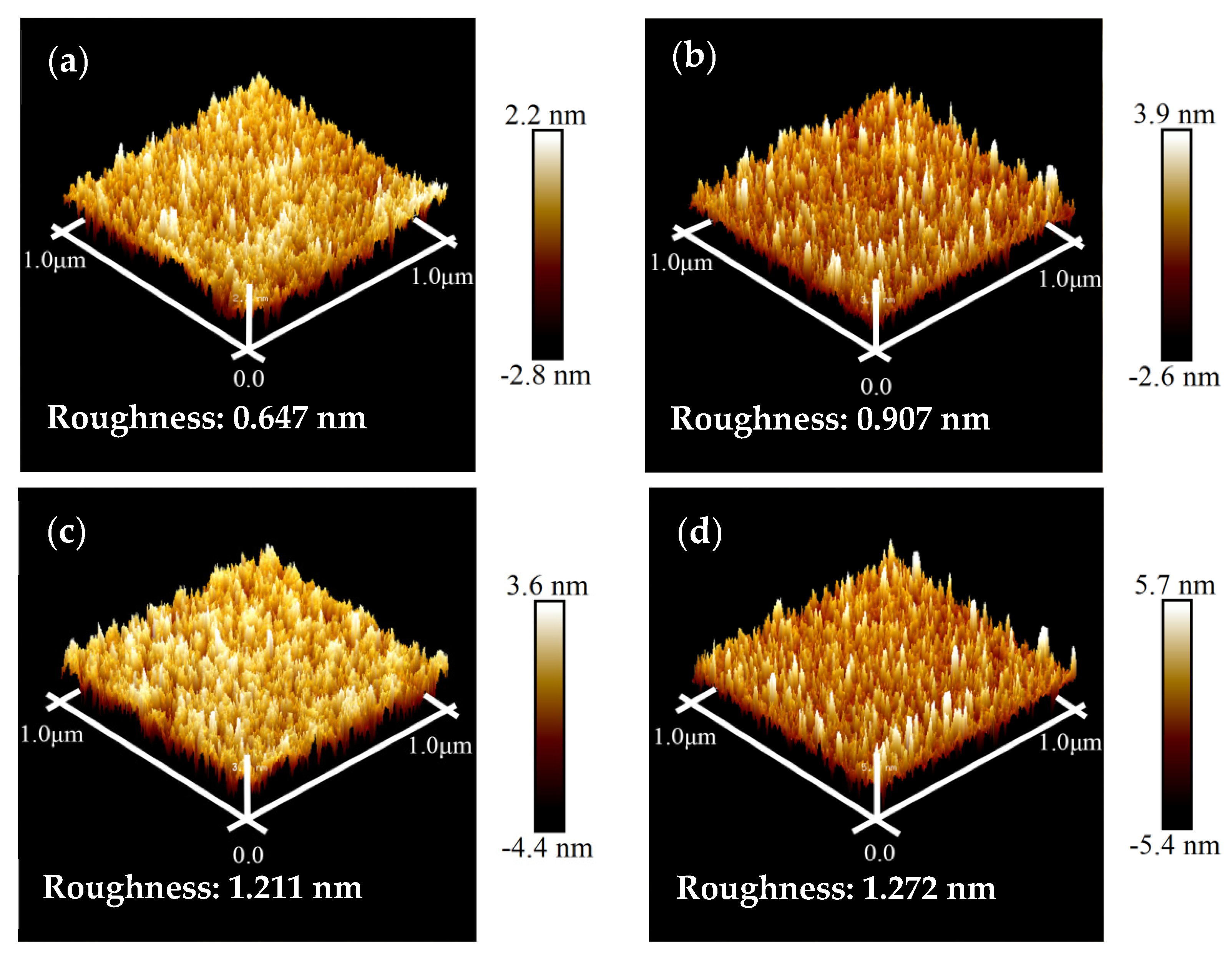
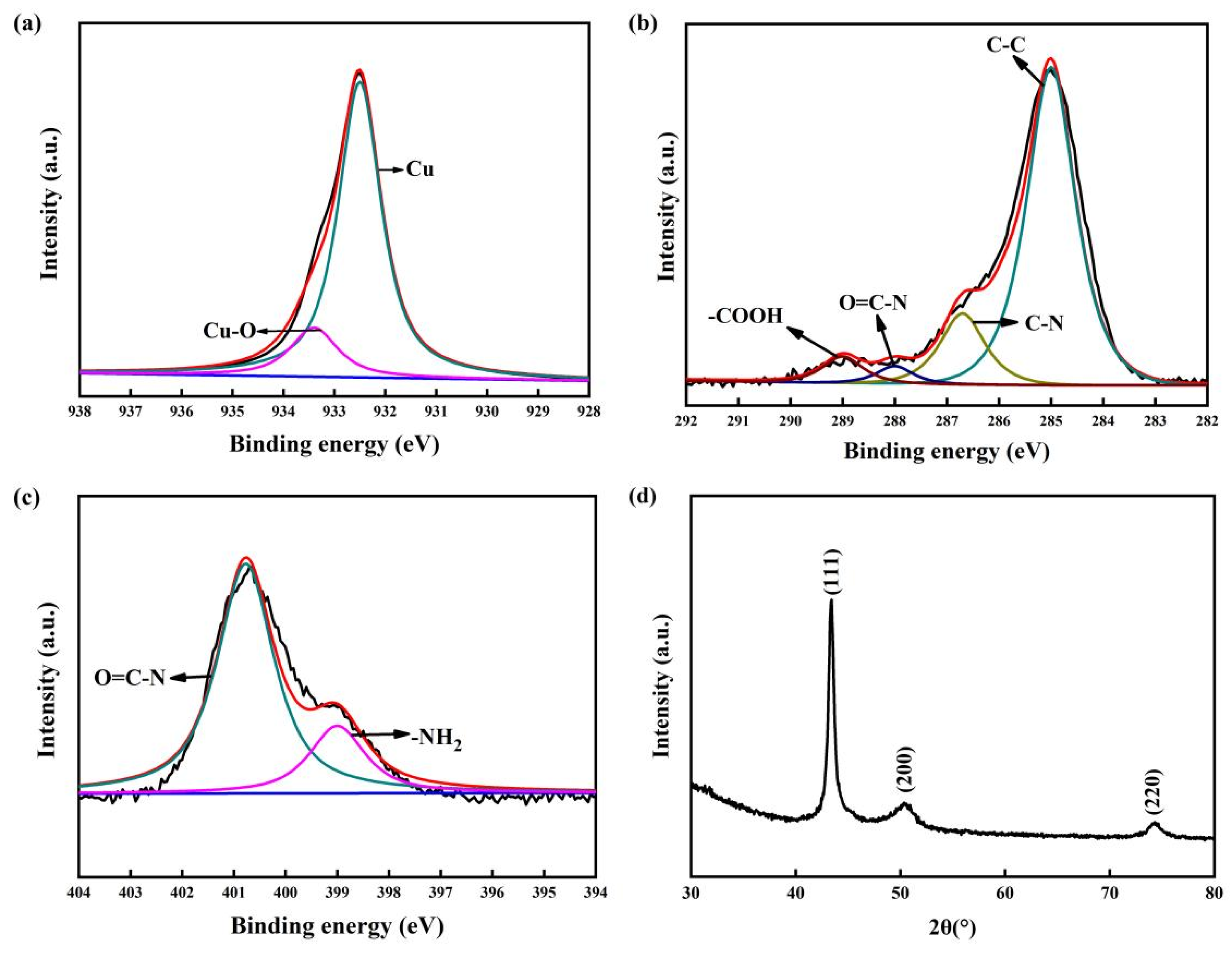
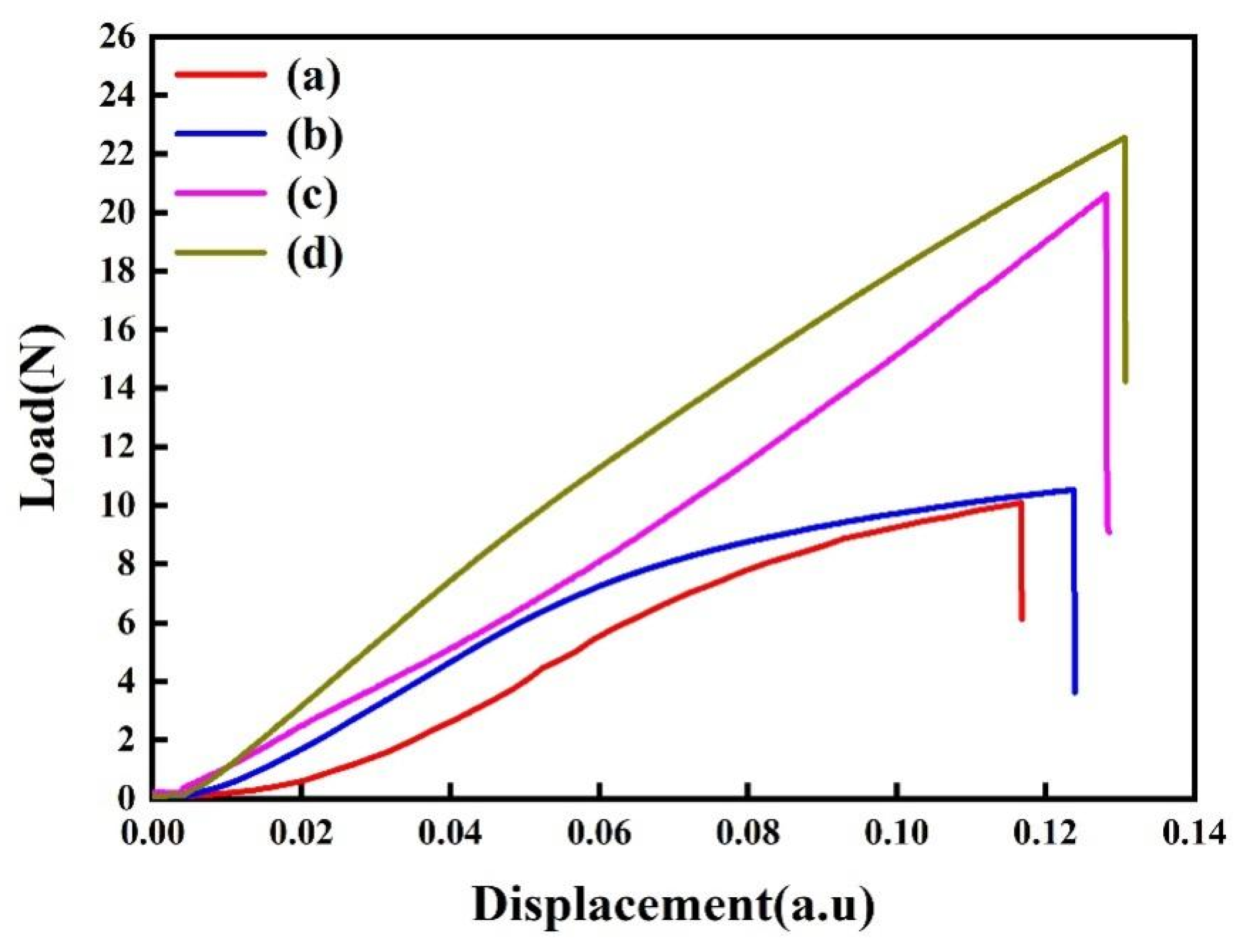

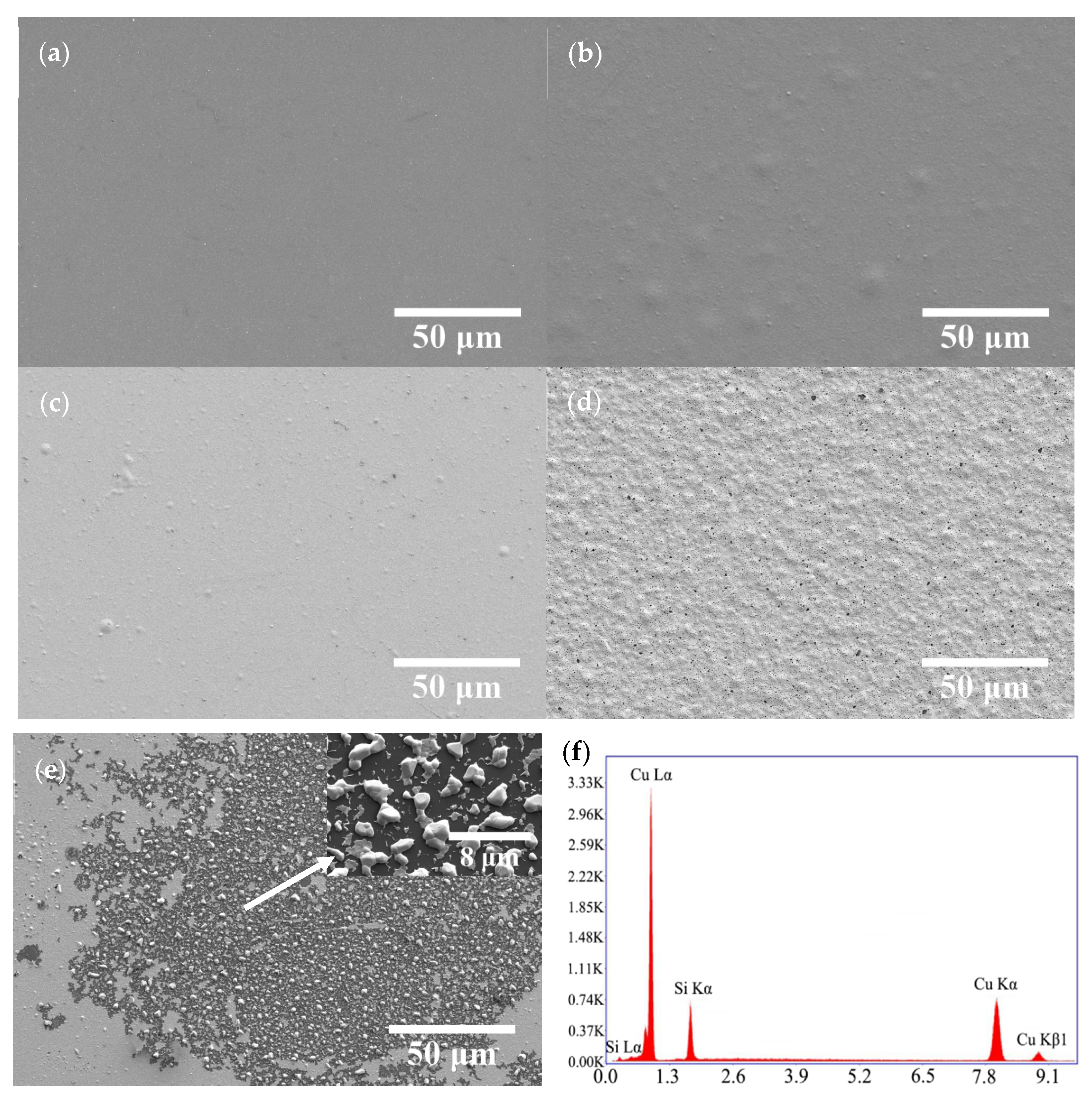
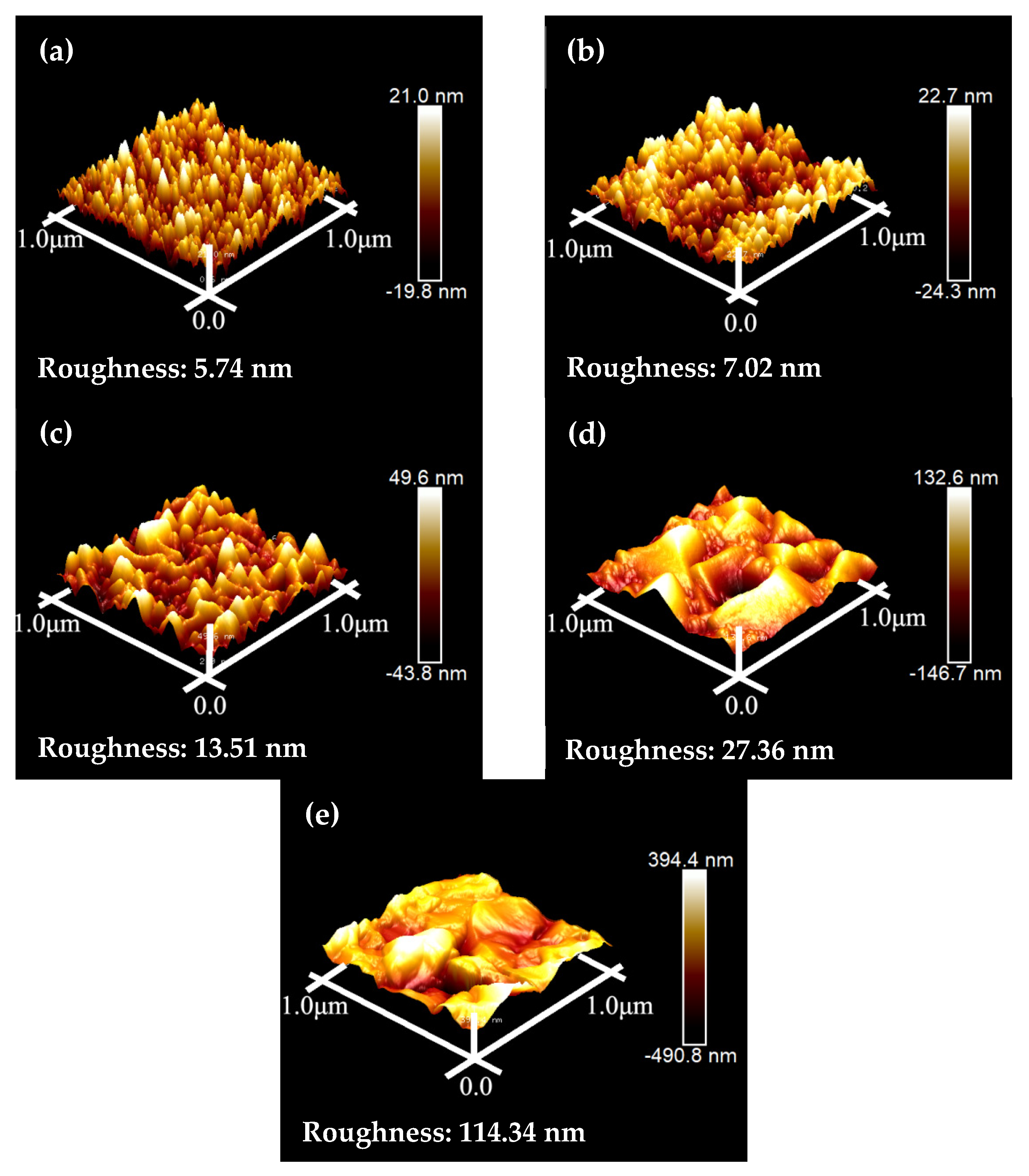
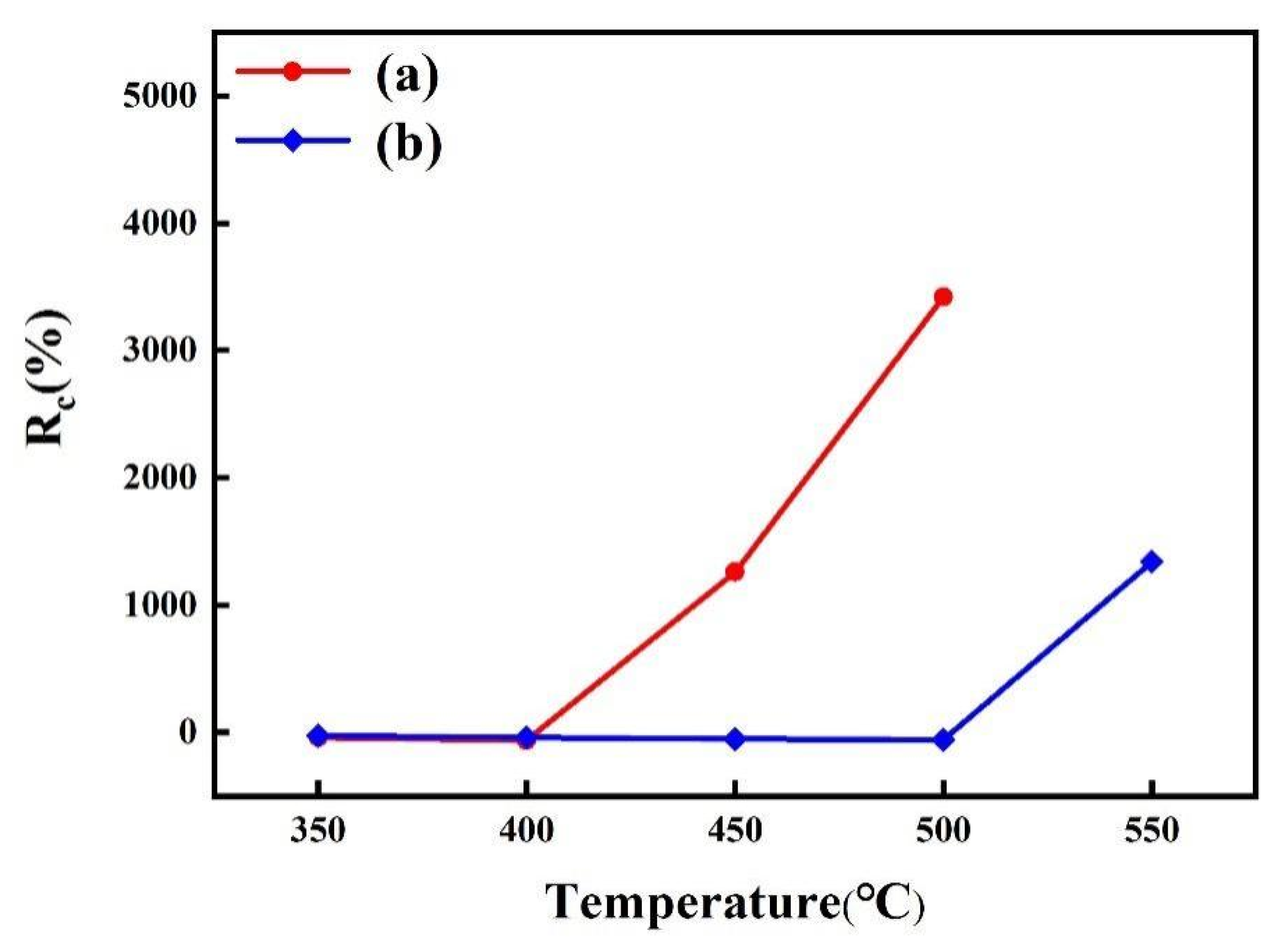
| Samples | As-Deposited | Annealed at 400 °C |
|---|---|---|
| Cu/APTMS/SiO2/Si | 1.58 ± 0.29 J/m2 | 6.58 ± 0.28 J/m2 |
| Cu/COOH-APTMS/SiO2/Si | 1.72 ± 0.25 J/m2 | 7.88 ± 0.34 J/m2 |
Publisher’s Note: MDPI stays neutral with regard to jurisdictional claims in published maps and institutional affiliations. |
© 2022 by the authors. Licensee MDPI, Basel, Switzerland. This article is an open access article distributed under the terms and conditions of the Creative Commons Attribution (CC BY) license (https://creativecommons.org/licenses/by/4.0/).
Share and Cite
Liu, H.; Fu, M.; Wang, Z.; Pang, S.; Zhu, H.; Zhang, C.; Ming, L.; Liu, X.; Ding, M.; Fu, Y. Thermal Stability of Self-Assembled 3-Aminopropyltrimethoxysilane Diffusion Barrier Terminated by Carboxyl Groups. Appl. Sci. 2022, 12, 11098. https://doi.org/10.3390/app122111098
Liu H, Fu M, Wang Z, Pang S, Zhu H, Zhang C, Ming L, Liu X, Ding M, Fu Y. Thermal Stability of Self-Assembled 3-Aminopropyltrimethoxysilane Diffusion Barrier Terminated by Carboxyl Groups. Applied Sciences. 2022; 12(21):11098. https://doi.org/10.3390/app122111098
Chicago/Turabian StyleLiu, Hongjin, Mingkun Fu, Zhe Wang, Shaozhi Pang, Huaiqing Zhu, Chen Zhang, Lijun Ming, Xinyu Liu, Minghui Ding, and Yudong Fu. 2022. "Thermal Stability of Self-Assembled 3-Aminopropyltrimethoxysilane Diffusion Barrier Terminated by Carboxyl Groups" Applied Sciences 12, no. 21: 11098. https://doi.org/10.3390/app122111098
APA StyleLiu, H., Fu, M., Wang, Z., Pang, S., Zhu, H., Zhang, C., Ming, L., Liu, X., Ding, M., & Fu, Y. (2022). Thermal Stability of Self-Assembled 3-Aminopropyltrimethoxysilane Diffusion Barrier Terminated by Carboxyl Groups. Applied Sciences, 12(21), 11098. https://doi.org/10.3390/app122111098






